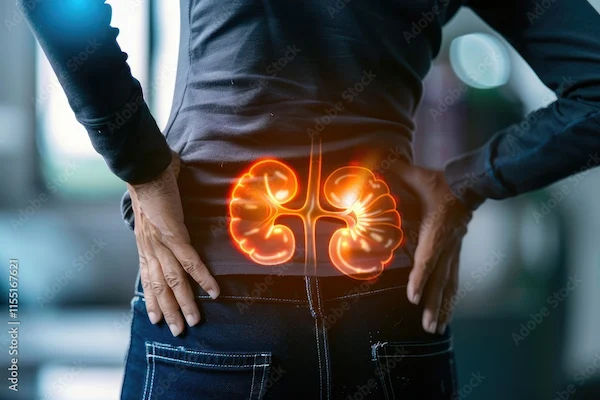Your Guide to Recent Advances in Anaesthesia for Surgery
Discover the latest advances in anaesthesia for surgery, from precision dosing and advanced monitoring to targeted pain control and faster recovery.

Written by Dr. Rohinipriyanka Pondugula
Reviewed by Dr. Siri Nallapu MBBS
Last updated on 29th Sep, 2025

Introduction
The thought of undergoing surgery can be daunting, often accompanied by questions about the anaesthesia process. Will I feel pain? What if I wake up? How long will recovery take? The good news is that the field of anaesthesiology has undergone a quiet revolution. Today's surgery recent advances are not just about sharper scalpels or robotic arms; they are profoundly about making anaesthesia safer, smarter, and more personalised than ever before. This guide will walk you through the cutting-edge technologies and techniques that are transforming the patient experience, from more precise dosing and enhanced monitoring to revolutionary pain control methods that promise a smoother journey and a faster return home. Your comfort and safety are the primary goals, and modern anaesthesia is designed to deliver exactly that.
Why Anaesthesia Advances Matter to You
When you think of surgical innovation, you might picture high-definition screens and robotic consoles. But some of the most significant progress happens behind the scenes, directed by your anaesthesiologist. These advances in anaesthetic care directly impact your safety, comfort, and recovery speed, turning a major medical event into a more controlled and predictable experience.
Beyond "Going to Sleep": The Three Types of Anaesthesia
It's a common misconception that all anaesthesia is the same. In fact, there are three main types:
General Anaesthesia: A medically induced coma where you are completely unconscious.
Regional Anaesthesia: Numbing a large part of your body (like an arm, leg, or everything below the waist) while you remain awake or sedated.
Local Anaesthesia: Numbing a small, specific area.
The choice depends entirely on your surgery, health, and preferences. Modern advances have improved all three categories.
The Core Goals: Safety, Precision, and Comfort
The driving force behind all recent anaesthesia techniques is a trio of goals: to eliminate pain (comfort), to ensure you are physiologically stable throughout (safety), and to use the exact right amount of medication for your unique body (precision). This move away from a one-size-fits-all approach is what makes modern anaesthesia so effective.
Precision Dosing and Enhanced Safety Monitoring
Gone are the days of simply estimating anaesthetic doses based on weight. Today, technology allows for unparalleled precision.
Brain Monitors (BIS/EEG): Ensuring You're "Just Right" Asleep
A major fear for patients is being aware during surgery. Conversely, too much anaesthetic can slow down recovery. Brain monitors like the Bispectral Index (BIS) use sensors on your forehead to measure brain wave activity. It provides a number that tells your anaesthesiologist exactly how deeply asleep you are, allowing them to tailor your medication in real-time to keep you perfectly in the "therapeutic zone." This is a prime example of how patient safety technology has evolved.
Health topic carousel:
Doctor's speciality: Anesthesiology
Text: Consult an Anaesthesianist for the best advice
Advanced Haemodynamic Monitors: Watching Your Heart in Real-Time
These sophisticated monitors go beyond tracking pulse and blood pressure. They can now provide detailed information on your heart's output, the volume of blood in your vessels, and how well your tissues are receiving oxygen. This allows for proactive management of your fluids and medications, ensuring your vital organs are optimally perfused throughout the procedure, which is crucial for a smooth recovery.
The Revolution in Airway Management
Securing a patient's airway is one of the most critical tasks in anaesthesia. New tools have made this safer and more efficient.
Video Laryngoscopy: A Camera for a Clearer View
Instead of relying solely on the direct line of sight used with traditional laryngoscopes, video laryngoscopes have a tiny camera at the tip. This projects a high-definition view of the vocal cords onto a screen, making placing the breathing tube significantly easier, especially in patients with difficult airways. This technology has dramatically improved the success rate and safety of intubation.
The Supraglottic Airway (LMA): A Gentler Alternative
For many shorter procedures, the need for a breathing tube is eliminated altogether. A supraglottic airway (like an LMA) is a device that sits at the back of the throat, forming a seal above the vocal cords. It's less invasive, causes less post-operative throat discomfort, and is often an excellent component of modern pain management strategies for outpatient surgery.
Targeted Pain Control: Regional Anaesthesia & Nerve Blocks
This is perhaps the area where patients feel the benefits of recent advances most directly. The era of relying solely on high doses of opioid painkillers (with their side effects like nausea and drowsiness) is fading.
Ultrasound-Guided Nerve Blocks: Seeing the Nerves We Numb
This is a game-changer. Using ultrasound guidance, anaesthesiologists can now see live images of nerves, blood vessels, and muscles on a screen. They can then guide a needle directly to the target nerve and deposit local anaesthetic with pinpoint accuracy. This technique maximises effectiveness while minimising the risk of complications. For example, a single nerve block can numb just your shoulder for surgery, leaving the rest of your body unaffected.
Catheter Techniques: Pain Relief That Lasts Days, Not Hours
For surgeries with expected significant post-operative pain (like knee replacements or major abdominal procedures), a tiny catheter (a thin, flexible tube) can be placed near the nerve. This allows for a continuous infusion of local anaesthetic, providing superb pain relief for 2–3 days after surgery, dramatically reducing the need for systemic opioids and facilitating early mobility—a key factor in recovery.
Common Surgeries Using Enhanced Regional Techniques
Knee and Hip Replacements: Femoral and sciatic nerve blocks.
Shoulder Surgery: Interscalene nerve block.
Hand Surgery: Brachial plexus block.
C-Sections: Spinal anaesthesia, often with long-acting opioids for extended relief.
Abdominal Surgery: TAP blocks or epidural catheters.
Smoother Takeoffs and Landings: Drugs for Induction and Emergence
The start and end of general anaesthesia are critical phases. New drugs have refined these processes.
Sugammadex: The "Off-Switch" for Muscle Relaxants
Muscle relaxants are used to paralyse the body for certain surgeries, but their effects used to take time to wear off. Sugammadex is a revolutionary drug that can rapidly reverse the effects of specific muscle relaxants within minutes. This allows for more predictable and faster waking up, ensures breathing muscles are strong, and enhances safety by giving the anaesthesiologist complete control.
Dexmedetomidine: The "Calm Without Deep Sleep" Drug
This versatile medication provides sedation, pain relief, and anxiety reduction without significantly suppressing breathing. It’s perfect for procedures where the patient needs to be calm but responsive, or as an adjunct to keep patients comfortable and stable during and after surgery with fewer side effects than traditional sedatives.
Specialised Care for Every Patient
Modern anaesthesia is deeply integrated into a holistic surgical plan.
ERAS Protocols: A Multi-Disciplinary Approach to Healing
Enhanced Recovery After Surgery (ERAS) is an evidence-based pathway designed to help patients recover faster. It involves steps before, during, and after surgery. Anaesthesiologists are key players in ERAS, managing fluid balance, employing multi-modal pain management (using multiple non-opioid methods), and controlling nausea to get patients eating, drinking, and moving sooner.
The Anaesthesiologist's Role in Enhanced Recovery
Your anaesthesiologist's role extends beyond the operating room. They are integral in planning your pre-operative nutrition, optimising your chronic conditions, and designing a post-operative pain plan that minimises opioids to get you back on your feet faster with fewer complications. If you have complex health issues, discussing these protocols with your surgeon and a specialist from Apollo24|7 can help you create the best possible pre-surgical plan.
Conclusion
The landscape of anaesthesia has transformed, moving from a blunt instrument to a finely tuned symphony of technology, pharmacology, and expert care. The recent advances in anaesthesia—from ultrasound-guided nerve blocks that target pain with precision to monitoring that keeps you perfectly asleep and stable—are all focused on one outcome: your well-being. These innovations mean less pain, fewer side effects, lower risks, and significantly faster recoveries. If you are scheduled for surgery, remember that you are not just a passenger. You are an informed participant. Have a detailed conversation with your surgeon and anaesthesiologist. Ask about the techniques discussed here and which ones might be appropriate for you. Being proactive in understanding your care is the final, and most important, advance of all.
FAQs
Is general anaesthesia safer now than it was 10 years ago?
Yes, significantly. Advances in monitoring technology (like brain function monitors), safer drug formulations, and better training have made the risk of a major complication from general anaesthesia extremely low for the average healthy patient.
Can I choose to have a nerve block instead of general anaesthesia for my surgery?
It depends on the procedure. For surgeries on limbs (knee, shoulder, hand), regional anaesthesia is often an excellent choice, either alone with sedation or combined with a lighter general anaesthetic. For major abdominal or chest surgery, general anaesthesia is typically necessary, but nerve blocks can be added for post-operative pain management. The best approach is a discussion between you, your surgeon, and your anaesthesiologist.
What are the benefits of an ultrasound guided nerve block?
The primary benefit is precision. The ultrasound allows the anaesthesiologist to see the exact needle path, avoid blood vessels and other structures, and place the local anaesthetic right where it needs to be. This increases effectiveness, reduces the amount of medication needed, and lowers the risk of complications.
I get very nauseous after anaesthesia. Are there new ways to prevent this?
Absolutely. Post-operative nausea and vomiting (PONV) is a common focus. Today, anaesthesiologists use a multi-drug approach tailored to your specific risk factors. This includes newer anti-nausea medications given proactively during surgery, avoiding nausea-inducing anaesthetic drugs when possible, and using nerve blocks to reduce the need for opioids, a major cause of nausea.
How long does it take for the modern anaesthesia drugs to wear off completely?
The newer drugs are designed to be short-acting and predictable. With drugs like Propofol for sedation and Sugammadex to reverse muscle relaxants, most patients are fully alert within 30–60 minutes of waking up. However, the feeling of being "back to normal" can take 24–48 hours, as the body fully metabolises all the medications. It's crucial to have someone drive you home and to avoid making important decisions or operating machinery for at least 24 hours.
Health topic carousel:
Doctor's speciality: Anesthesiology
Text: Consult an Anaesthesianist for the best advice




